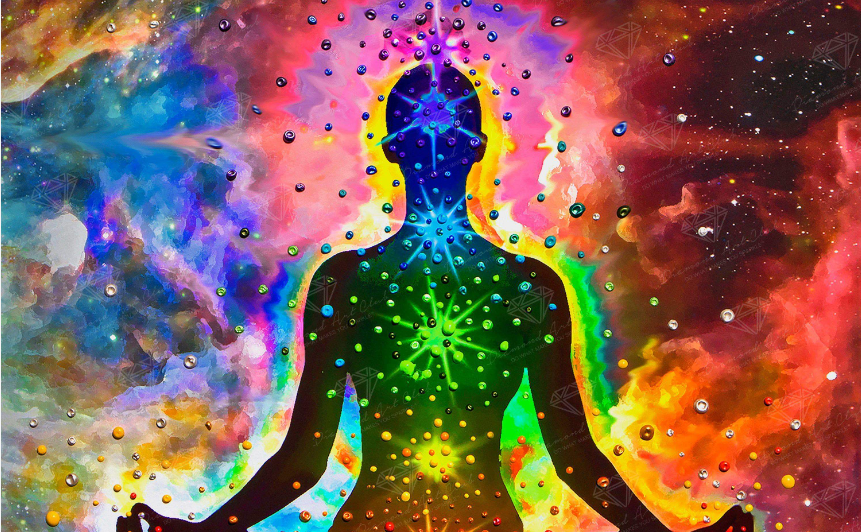You may have heard a popular saying about the sun shining out of a certain body part when someone thinks too much of themselves, but in this article I’m going to state that the sun shines out of your Manipura Chakra, metaphorically speaking of course.
Overview of Manipura
The yellow chakra is called manipura which means ‘place of pearls’. It is positioned just below the sternum and governs our personal power, our ability to handle stress and our feeling of inner knowing. The solar plexus chakra is our vital energy storehouse. If you ever wondered where your gut feeling had its spiritual home, this is where it is. Our ‘pearls’ of gut instinct, personal power and self-confidence are delicate possessions that are easily disrupted by stress in our lives.
The manipura chakra is also one of the major points in the body where prana enters. This chakra works like a magnet drawing energy in from the universe to distribute around the body through the nadis. When prana isn’t moving well physical, emotional and psychological symptoms can appear.
See Also: First Steps To Demystifying Prāna
Solar Plexus Chakra Fast Facts
| Position: | Just beneath the sternum |
| Colour: | Yellow |
| Petals: | Ten |
| Related Element: |
Fire |
| Metal: | Iron |
| Musical Note: |
E |
| Mantra: | RAM |
| Gemstones: |
Citrine, Yellow Jasper, Golden Calcite |
| Senses: | Sight |
| Planet: |
Mars/Sun |
| Essential Oils: | Geranium and Clary Sage, Bergamot |
| Yoga Poses: |
Cow Pose, Seated Spinal Twist and Camel Pose |
When Manipura is Imbalanced
If you think you may have a chakra imbalance you can take steps to restore the energy flow yourself. When the solar plexus chakra is strong we deal with life’s challenges well. We ‘just know’ when we’re on the right path and we exude self-confidence, self-awareness and generosity. We feel strong and vital, we’re positive and upbeat.
If the solar plexus chakra is overactive then over-confidence, arrogance and aggressiveness can occur. We may feel cocky and our overdeveloped sense of self is pushed to the forefront in all we say and do. It could be said that our sun has decided to shine out from somewhere else!
If the solar plexus chakra is underactive we’re anxious and uptight, lacking in confidence and mentally weak. Stress has the upper hand and we lack energy, we’re unable to think clearly and we feel powerless. A person that is too passive about their life often has an underactive manipura chakra.
Physical symptoms of an imbalanced solar plexus chakra include problems with the pancreas, diabetes, stress-related illnesses, blood pressure issues and digestive problems to do with the ‘digestive fire’ or agni. Chakra imbalance can happen at any point in our lives. By working with the energy flow of the chakra we can easily restore balance and physical symptoms can dissipate. Stress in particular is especially responsive to an alternative approach to healing.
See Also: How to Use the Science of Stress to Your Advantage
Exercising the Solar Plexus Chakra
To really understand your relationship with your solar plexus chakra, it’s a good idea to try working with its energy directly. We’ve put together some activities that you can try to get in touch with that energy flow and balance it. Refer back to the Fast Facts section and you’ll see that there are plenty of ways to work with your solar plexus chakra. Try modifying the other Fast Facts for the previous chakras or try the exercises below…
1. Candle Meditation
Dharana, one of the eight limbs of yoga, is the mastery of one-pointed attention and the control of intention. Placing attention on a single object, such as a candle flame, draws the mind into silent contemplation causing mental noise to gently cease. Candle meditation is a perfect example of practicing Dharana and the sense of sight is closely linked to the Manipura chakra.
To practice a candle meditation make your practice area as dark as possible. Turn off the lights, draw the curtains and shut the blinds. Light your candle and place it just below your eye level. Sitting about half a metre away but no more than one metre away from the candle, take a few deep breaths and allow your gaze to fall onto the candle flame. Pick a point just above the wick and stare there.
You may find your eyes tearing a bit but this will pass. As the meditation continues and you become absorbed with the candle flame’s activity observe, without interfering, the quietness that has descended in your mind.
2. Tummy Massage
Pick one of the aromatherapy oils from the Fast Facts section and add a few drops to a base massage oil such as almond oil, warm between your hands and apply gently to the tummy — or better still, have someone do it for you!
Apply the oil with both palms gently over the whole abdomen. Spend some time on this, feeling for tension and breathing deeply to relax the abdominal area. Then, using small, circular motions with your fingertips and without pushing down too hard, work lightly and slowly over the tummy. When massaging your tummy always move in the same direction as the bowel. Create a large circle starting from the crest of the right pelvis, working up towards the bottom ribs, across the bottom of the ribs working to the left, and then down towards the crest of the left pelvis. Be extra careful crossing over the bladder making sure the movements are light and then back to the right pelvis again.
Tummy massage isn’t appropriate for everyone. If you are pregnant or have any existing medical conditions related to the digestive, reproductive or urinary system please speak to your doctor or qualified therapist before using this technique or aromatherapy oils.
3. Relaxation Techniques
When stress is becoming an issue nothing helps more than a regular relaxation session to release physical tension and to soothe the mind. One of the best methods for achieving a deep state of relaxation is to practice Yoga Nidra.
If you’re going through a particularly stressful time it is vitally important that you put your wellbeing first. Create a relaxation plan where you set out one or two relaxing activities to do every day. Practising Yoga Nidra before bed will not only have you dropping off like a log but will also spread that relaxation into the next morning giving you a great start to the day. Try Yoga Nidra every night for a week and see the difference for yourself.













